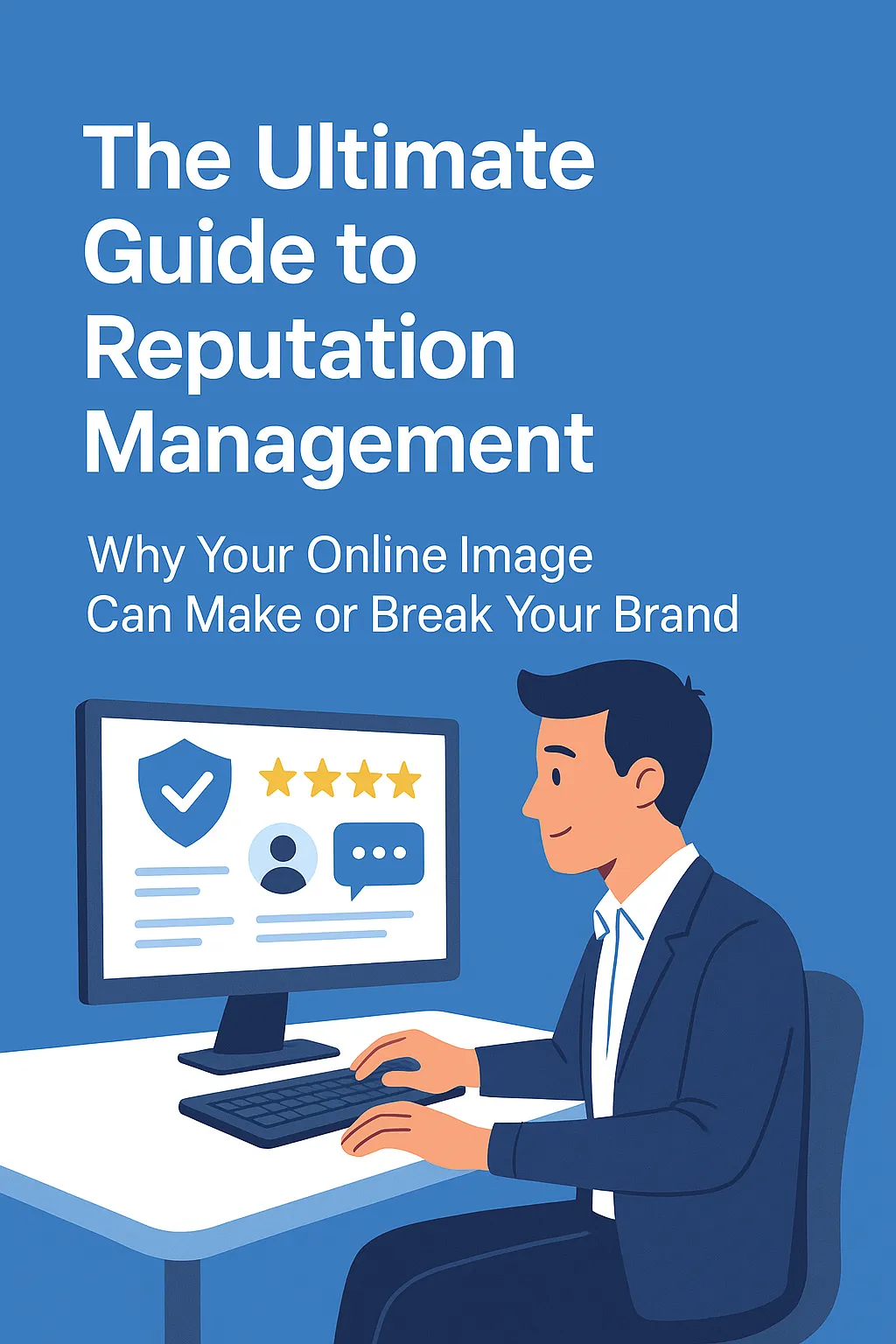
The Ultimate Guide to Reputation
The Ultimate Guide to Reputation Management: Why Your Online Image Can Make or Break Your Brand
In today’s hyper-connected digital world, your reputation isn’t just what people say about you behind closed doors—it’s what appears in a Google search, on Yelp, in blog comments, and across social media feeds. That’s why reputation management has become one of the most critical elements of a brand’s success online.
At Future Level Marketing, we believe proactive reputation management is more than damage control—it’s about strategically building trust, credibility, and influence in your niche. In this guide, we’ll break down what reputation management is, why it matters, and the tools and tactics that help you maintain a stellar online presence.
What Is Reputation Management?
Reputation management is the process of monitoring, influencing, and improving how your brand is perceived online. This includes responding to customer reviews, optimizing search engine results, managing press coverage, and shaping your brand narrative across digital channels.
There are two main types of reputation management:
Proactive: Building a strong presence with positive content, social proof, and thought leadership.
Reactive: Addressing negative feedback, misinformation, or online crises when they occur.
With the explosion of user-generated content, reputation management now requires a hybrid approach that combines SEO, PR, social media, and customer service strategies.
Why Reputation Management Is a Business Imperative
Online reputation isn't a luxury—it's a necessity. Here's why:
1. First Impressions Start Online
According to BrightLocal’s Local Consumer Review Survey, 98% of consumers read online reviews before deciding to interact with a business, and 87% won’t consider companies with low ratings.
2. Search Engine Results Influence Trust
The top results in Google searches heavily influence brand perception. Negative news, bad reviews, or outdated content can push potential customers away. A well-managed reputation ensures your best foot is forward when people look you up.
3. Positive Reputation Drives Revenue
Brands with a strong online presence earn more. A Harvard Business School study found that a one-star increase in Yelp ratings leads to a 5–9% increase in revenue.
Key Elements of Online Reputation Management
Reputation management isn’t a one-size-fits-all effort. It involves a series of coordinated strategies:
1. Review Monitoring and Response
You need to track reviews across all major platforms—Google, Yelp, Facebook, and industry-specific directories like TripAdvisor or G2. Use tools like:
Respond to both positive and negative reviews professionally and promptly. It shows you value customer feedback and take responsibility when things go wrong.
2. Google My Business Optimization
Claiming and optimizing your Google Business Profile helps your company appear in local search and map results. Keep your info up-to-date, post regular updates, and encourage happy clients to leave reviews.
3. SEO & Content Strategy
Publishing high-quality content helps control what appears in search results for your brand name. Focus on:
Optimized blog posts
Case studies
Client testimonials
Press releases
Use tools like SEMrush or Ahrefs to identify branded search terms and monitor your search visibility.
4. Social Media Monitoring
Your brand reputation is also shaped by what’s said on social platforms. Tools like Mention and Brand24 alert you to brand mentions so you can respond quickly and professionally.
5. Crisis Management Plans
Don’t wait for a PR disaster to create a plan. Every business should have a protocol for handling:
Negative press
Viral complaints
Misinformation
This includes pre-written responses, designated spokespeople, and an internal communication flow.

How to Build a Positive Online Reputation: 5 Steps
1. Audit Your Current Online Presence
Search your brand name, key executives, and product names. Note what shows up in the top 20 Google results, what reviews exist, and any negative content.
2. Encourage Authentic Reviews
Send follow-up emails or SMS messages after a sale asking for feedback. Make it easy by linking directly to your review profiles.
3. Leverage Positive PR
Pitch guest posts or interviews to industry blogs. Use platforms like Help a Reporter Out (HARO) to gain backlinks and media coverage.
4. Optimize Branded Search Terms
Create targeted content around your business name, founder name, and product reviews to take control of your SERPs (search engine results pages).
5. Implement Reputation Tracking Tools
Stay ahead of potential problems by monitoring your digital footprint. Tools like Birdeye and ReviewTrackers provide centralized dashboards for brand monitoring.
The Future of Reputation Management
With the rise of AI, deepfakes, and fake reviews, online reputation management is evolving fast. Here’s what to expect next:
AI-powered sentiment analysis will help brands detect issues before they go viral.
Decentralized review platforms using blockchain tech may help verify authenticity.
Proactive thought leadership (via LinkedIn and industry blogs) will play a bigger role in perception shaping.
As digital platforms become even more integral to business success, the brands that proactively manage their reputations will outshine those that play defense.
Why Choose Future Level Marketing for Reputation Management?
At Future Level Marketing, we specialize in helping businesses build and protect their online credibility. Our approach blends SEO, content strategy, public relations, and data-driven tools to give you complete control of your digital narrative.
We help you:
Monitor and improve your online reviews
Push down negative results in Google
Build a positive presence on social media
Prepare for and manage PR crises
Grow your brand authority over time
Ready to protect what you’ve built and boost your digital presence? Let’s talk. Contact us here to get started.
